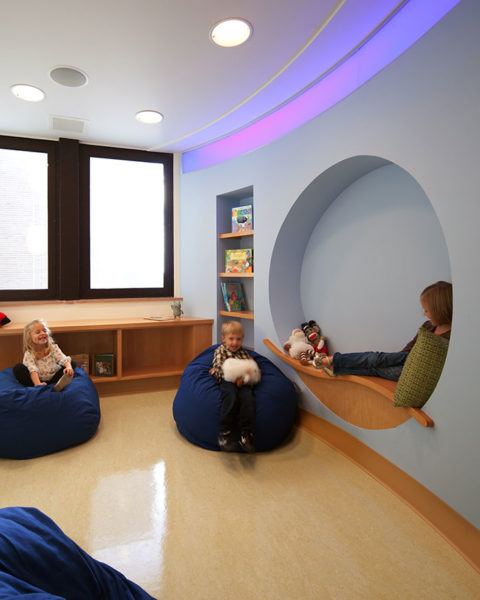Quick Links
HFM Daily

HFM Daily offers blog coverage by the award-winning HFM editorial team and links to in-depth information on health care design, construction, engineering, environmental services, operations and technology. You can read HFM Daily stories on this page or subscribe to Health Facilities Management This Week for a Friday roundup of the week's posts.
Designing for child and adolescent behavioral health
The University of Minnesota Masonic Children’s Hospital's remodeled child and adolescent behavioral health unit in which patients have choice and control offer greater perceptions of calm during their stay. Read the related article "Dignity in design for pediatric behavioral health facilities."


Use of semi-transparent materials between intake and treatment spaces and warm finishes such as wood window seats reduce feelings of anxiety for patients upon entering the unit.

Spaces for large muscle movement, such as the activity room with Xbox and interactive floor tiles, allow patients to practice important coping skills.

Appropriate use of color and nature-inspired artwork creates a human-centered environment, supportive of patient dignity.

Better designed hardware is allowing care organizations to create mental health centers that are more elegant and safe for patients and staff.

Through floor patterns and benches, a “front porch” to patient rooms is created that allows patients to transition from private to public spaces at a pace that is comfortable for them. The benches double as a space for staff to sit and talk with patients within a zone of personal comfort for the patient.

Platform beds with personal storage space, individual desks and a black boards on which patients can write names and messages create rooms that are more personalized and take on a sense of identity for patients.

Anti-ligature doors to bathrooms provide a safe environment for patients while maintaining a dignified environment that gives patients privacy.

Patient rooms feature a platform bed, built-in curved wood bench, personal grooming space and a painted chalkboard wall surface to encourage personalization.

Seating options and places to cocoon provide patients alternatives to patient rooms and helps integrates patients into more social settings.

Spaces with sensory options and tools for large muscle movement provide patients the opportunity to learn self-regulation techniques and has helped staff and patients work together to develop positive coping strategies.

